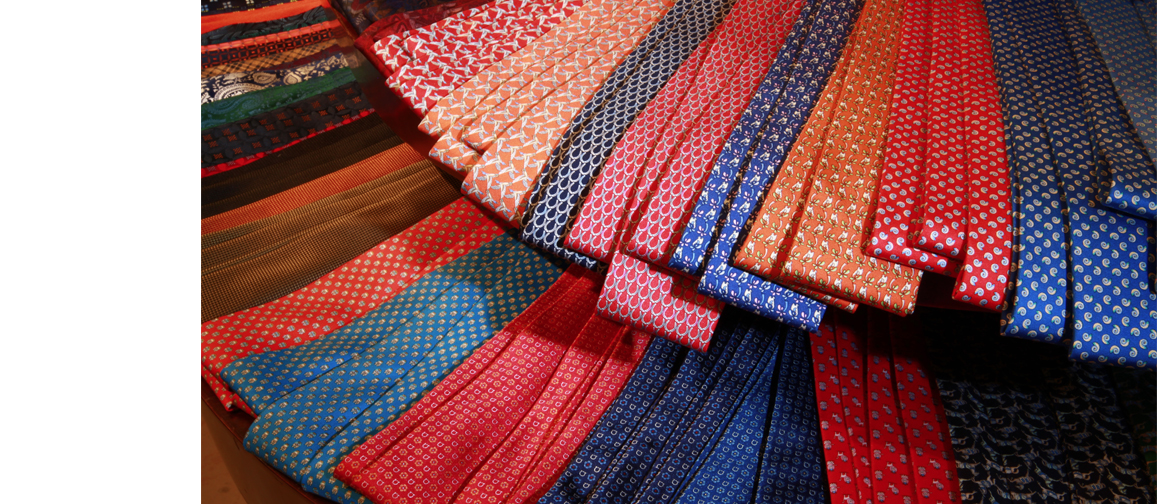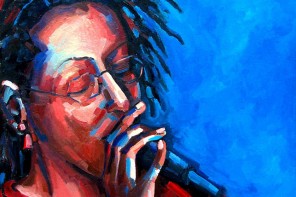Clothing has long been thought of as a form of communication, with women’s affording them greater expressivity. All the more reason to pay attention to the necktie as indicator of men’s occupations, moods and even personalities.
Leaders in the high-stake games of politics and business sport neckties in two basic colors — red and blue. Red is the color of the basic power tie, a stimulating, eye-catching hue that oozes energy, sexuality, passion and dynamism. Red also denotes nobility, love and attention to details. Other shades convey other meanings. Darker reds, such as burgundy, imply trust, and magenta, self-confidence, while lighter shades of red and pink can make statements for engaging personalities.
Blue, however, is the safe, all-purpose color of the international power tie, due to its calming effect. In world leadership conferences, most participants wear one of the 50 shades of blue. It is thought to signify creativity and is the top choice for businessmen, with turquoise signaling an out-of-the-box creativity and open-mindedness.
Green is worn by easygoing nature lovers and reflects harmony and stability.
Orange suggests a wearer full of energy with a love of adventure.
Black is favored by revolutionaries, traditionalists and stylish gentlemen alike.
White ties are worn on formal or special occasions in Europe and America. But in China they signal a period of mourning.
Yellow: Beware of committing a cultural faux pas with this one. In England yellow is a traditional color, symbolic of the sun, showing optimism. But don’t wear it in India unless you’re a salesman.
In Washington, yellow or purple ties could be interpreted as statements of aloofness or just plain carelessness, a perception that no ambitious politician wants. Nor would he ever be seen in pre-tied or clip-ons worn by lazy guys or “on the prowl” neon ties with blazing psychedelic designs, prompting nosy journalists to suspect an illicit affair.
Evolution of the tie
Men’s neckties can be traced back 22 centuries, with perhaps the earliest examples appearing on the life-size ceramic army buried with China’s first emperor, Qin Shihuangdi, in 210 B.C. and excavated in 1974. The 7,000 armed warriors wore terra-cotta neckties in different styles painted in various colors. Archeologists assume the accessories — which seemed to foreshadow some of the styles worn today — indicated rank.
The modern tie, however, begins with the cravat that evolved from the traditional knotted neckerchiefs worn by Croatian mercenaries fighting alongside French troops during the Thirty Years’ War (1618-1648). (The word “cravat” is derived from à la croate — in the style of the Croats, who will be among those celebrating International Necktie Day on Oct. 18.)
Among those taken with the new neckwear was a budding fashionisto, the boy-king Louis XIV who set the sartorial standard for the French court and, as it turned out, the rest of Europe. The cravat became a symbol of style and status. But it took a long time to tie the various kinds properly. As nations became increasingly industrialized over the next three centuries, affording aspiring men both less time to dress well and the manufactured solution to that problem, neckties became long, thin and easy to knot. And those have been the criteria — with variations on pattern, texture and width — that have survived to this day.
Certain countries, however, have strong anti-necktie sentiments. They were forbidden in Communist China, during the Mao suit period. But when Deng Xiaoping announced “Rich is Glorious,” fancy silk brocade neckties came out of the closet to give astute businessmen an air of authority and professionalism.
In Iran, theocratic Muslim rulers have denounced the necktie as a decadent symbol of European oppression, although Iranian men abroad often wear neckties. Journalists refer to hard-liners as “Turbans” and soft-liners as “Ties.”
In various counterculture movements, neckties are viewed as being symbols of submission and slavery. And even among the power elite, there are occasions like the campaign trail when sans tie may be preferred.
So perhaps it’s better to know your audience before you tie one on.




